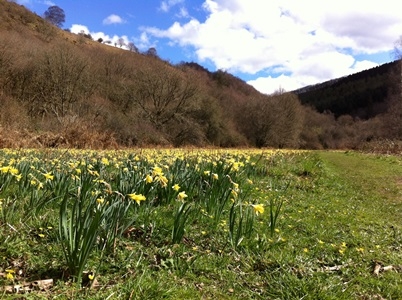
Dunsford will be one of the nature reserves to benefit
The project, which is called ‘Helping Habitats for South Devon’s Invertebrates’, is taking a local approach to a national problem: the alarming declines in insect populations. It plans to do this by improving many of the most important places where mini-beasts live, including heathlands, meadows, woodlands and freshwater streams/ponds.
A host of insect species stand to benefit. These include some of the county’s rarest such as the high-brown fritillary butterfly, Kugelann’s green clock beetle, the narrow-headed ant and the heath-potter wasp. Countless other more common species including moths, damselflies and bumblebees will also prosper.
Eleven of Devon Wildlife Trust’s nature reserves in South Devon and Dartmoor will form the focus of extensive practical work to create better homes for insects. Highlights will include the restoration of wildflower-rich grasslands more than 30 hectares at Emsworthy Mire, Dart Valley and Blackadon nature reserves (all on Dartmoor), and Chudleigh Knighton Heath, Bovey Heathfield, Dunsford (pictured) and Wolborough Fen nature reserves (all in South Devon).
At Teigngrace Meadow nature reserve, near Bovey Tracey, 1.5 hectares of woodland will be coppiced with trees being cutback to encourage new growth, while 4.5 hectares of wildflower meadows at the Trust’s Woodah Farm will be restored. At the charity’s Little Bradley Ponds and Lower East Lounston nature reserves the water quality of ponds and streams will be improved with the installation of separate drinking facilities for grazing cattle.

